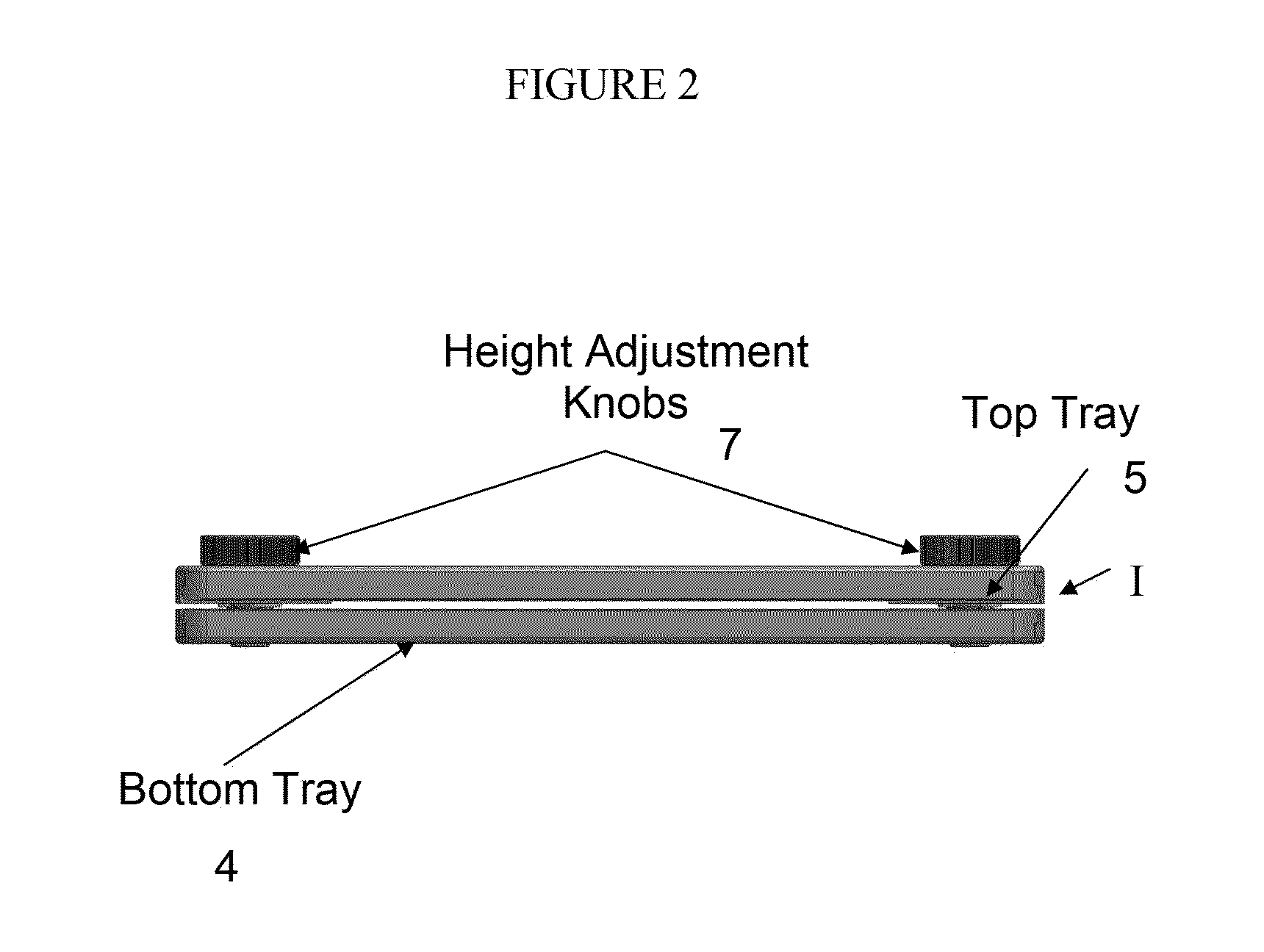Animal holder for in vivo tomographic imaging with multiple modalities
- Summary
- Abstract
- Description
- Claims
- Application Information
AI Technical Summary
Benefits of technology
Problems solved by technology
Method used
Image
Examples
example 1
Multi-Modality Imaging using the Animal Holder
[0143]An example of multi-modality imaging is depicted in FIGS. 46-48. Alexa Fluor 680 (AF 680) dye (Invitrogen, Carlsbad, Calif.) was dissolved in water and injected into a plastic imaging phantom. The imaging phantom was surgically inserted subcutaneously into the thoracic cavity of an adult NU / NU mouse (Charles River Laboratories, Wilmington, Mass.). The mouse then was placed into an animal holder of the invention and secured for imaging before the entire cassette was placed inside an FMT2500 imaging system (VisEn Medical, Inc., Bedford, Mass.). Free dye dissolved in water (AF 680) was injected into the fiducial wells of the animal holder. An FMT imaging dataset was collected and subsequent reconstruction was performed using software included in the FMT2500. The animal holder containing the same mouse then was placed inside a 7 Tesla Bruker MR system (Bruker BioSpin, Billerica, Mass.) and an MR dataset was collected using Paravision 4...
PUM
 Login to View More
Login to View More Abstract
Description
Claims
Application Information
 Login to View More
Login to View More - R&D
- Intellectual Property
- Life Sciences
- Materials
- Tech Scout
- Unparalleled Data Quality
- Higher Quality Content
- 60% Fewer Hallucinations
Browse by: Latest US Patents, China's latest patents, Technical Efficacy Thesaurus, Application Domain, Technology Topic, Popular Technical Reports.
© 2025 PatSnap. All rights reserved.Legal|Privacy policy|Modern Slavery Act Transparency Statement|Sitemap|About US| Contact US: help@patsnap.com



